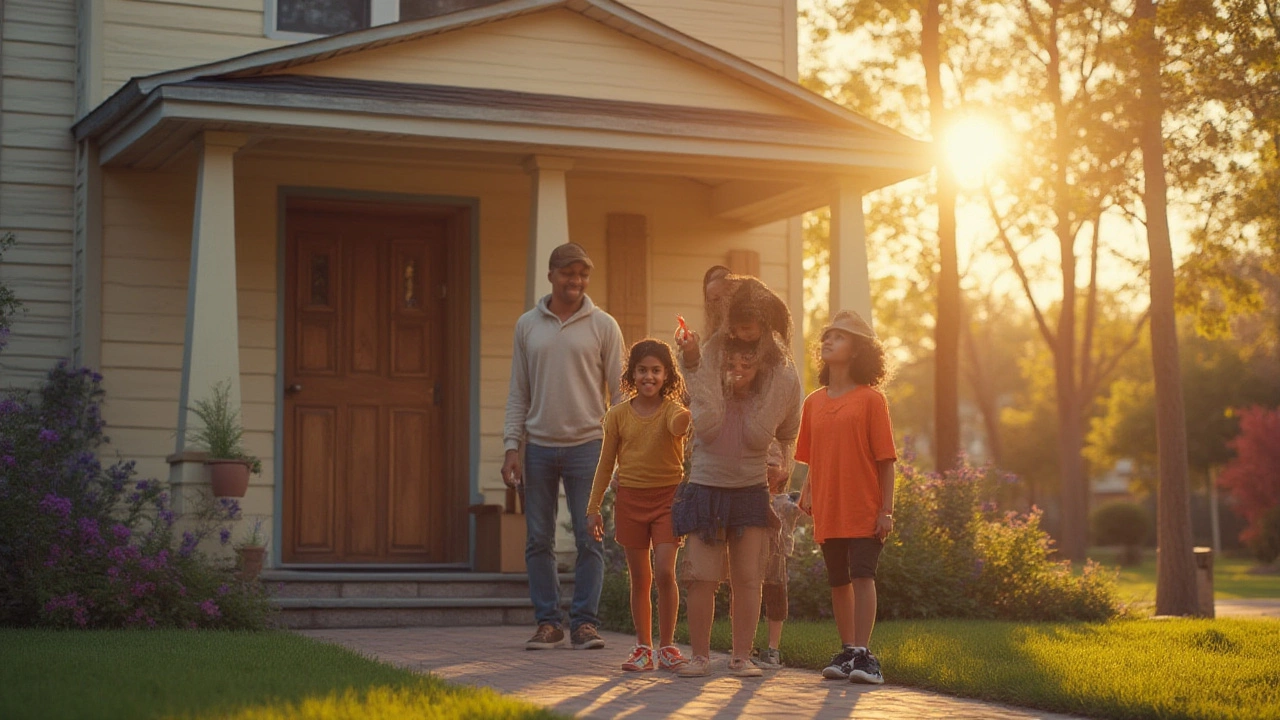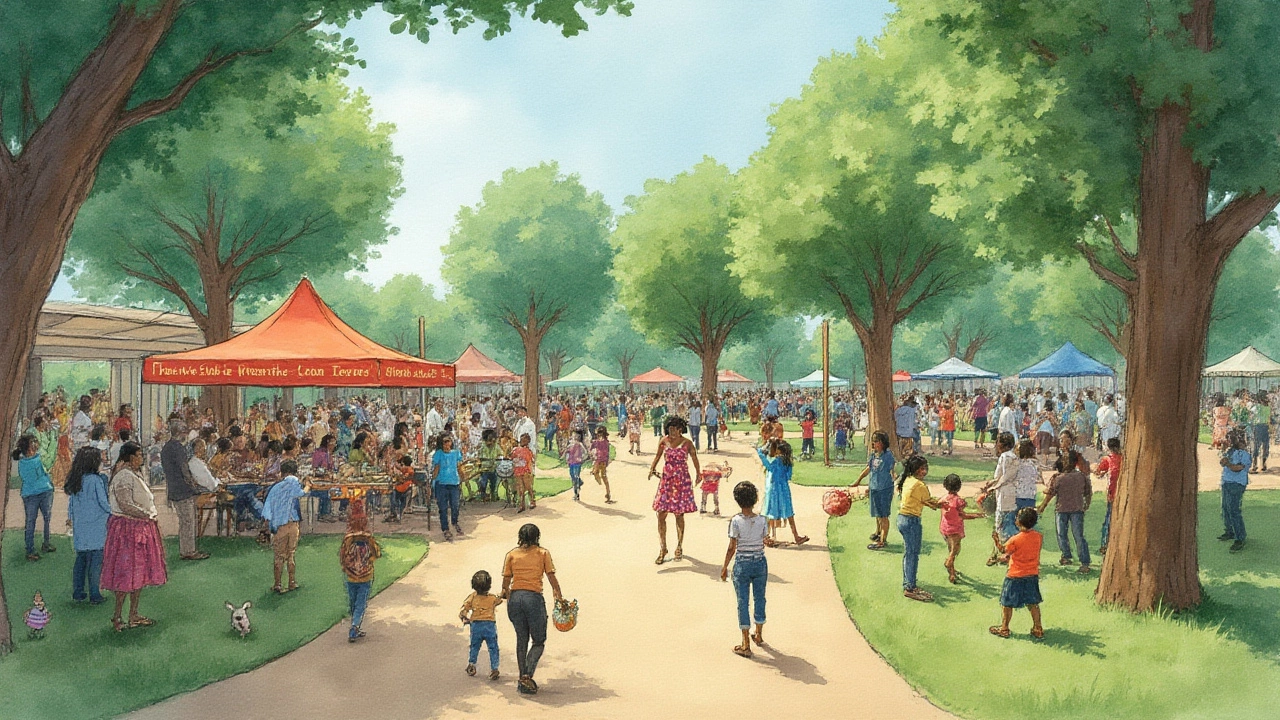Rapid Re-Housing Program Arkansas: How It Helps Homeless Families Find Stability
 Jul, 19 2025
Jul, 19 2025
Thousands of Arkansans never expect to wake up without a roof over their heads. Yet, every day, families across the state face the terrifying reality of homelessness with nowhere stable to call home. For parents, the thought of their kids losing their sense of safety and routine can be crushing. But the Rapid Re-Housing program is shaking up how Arkansas tackles this challenge—by putting speed, support, and hope front and center.
Understanding Rapid Re-Housing: Not Your Typical Shelter Solution
Traditional homeless shelters have helped tons of people weather emergencies, but they’re more like triage than a cure. That’s why rapid re-housing flips the script. Instead of lingering in shelters, families and individuals get straight to what they really need: their own place. The core idea is simple—homelessness isn’t a character flaw; it’s a crisis best solved by a safe, permanent roof and steady support.
This program, championed by the US Department of Housing and Urban Development (HUD), arrived in Arkansas in the late 2000s. It grew from research showing that housing instability is usually solved faster when people move out of shelters quickly, not after months or even years on a waitlist. And here’s the twist—it’s not just about writing checks for rent. The program helps folks find apartments, covers upfront costs like deposits, and offers short-term rental help while people rebuild their stability.
According to a 2023 report from the Arkansas Balance of State Continuum of Care, more than 1,500 families counted as "literally homeless" received help through rapid re-housing that year. The majority had children under 12. Turns out, getting kids out of chaotic shelter environments and into their own bedrooms keeps them in school, improves mental health, and helps parents focus on finding work or saving up.
Compare that to a standard shelter stay, where people sometimes wait for months—sometimes years—for housing support to open up. With rapid re-housing, the average family in Arkansas waits less than six weeks to get keys. It’s a game-changer for parents panicked by a sudden eviction or disaster.
How the Program Works: Fast-Track to a Stable Home
There’s no golden ticket or one-size-fits-all approach. Arkansas’ rapid re-housing program runs through non-profit agencies sprinkled around the state—big names like Family Promise, Our House in Little Rock, and a collection of church-based organizations in the Delta and River Valley. HUD and local entities fund the work, but the heart is in how these local teams hustle.
Here’s what actually happens:
- Intake & Assessment: A family or individual comes to a shelter, social services, or applies online. Workers screen for immediate risk—a process called the Vulnerability Index-Service Prioritization Decision Assistance Tool (VI-SPDAT). The most vulnerable rise to the top of the waiting list.
- Rental Search: The program team connects participants with local landlords. They help set up viewings, fill out paperwork, and negotiate lease terms. This is a lot more hands-on than most people expect, and it’s key since credit problems often follow homelessness.
- Financial Assistance: Rapid re-housing covers security deposits, the first few months’ rent (usually up to 6 months, sometimes 12), and connects folks to furniture banks for basics like beds and tables.
- Support Services: Once people move in, the team sticks around. They connect adults to job training, childcare, mental health counselors—or whatever fits the family’s needs. The idea isn’t just to pay rent, but help people gain skills to stay housed.
- Graduation and Stability: Gradually, folks take over the rent payments while the program keeps tabs to make sure nothing sends them back to homelessness. If trouble hits, they get rapid support.
It’s not just a parachute; it’s a bridge back to ordinary life. And most Arkansas landlords are surprisingly open to working with these programs, since risk is shared, and the support staff help smooth over any hiccups.

Impact in Arkansas: Turning the Tide for Families in Crisis
Arkansas stands out in one big way—the state’s rural landscape makes homelessness both less visible and harder to track than in big cities. Families in trouble might “double up” with relatives, live in cars, or hop between motels, making true counts tricky. But when rapid re-housing gets them into stable rentals, those invisible crises shrink.
Here are some powerful numbers, straight from the 2024 statewide outcomes report:
| Metric | 2024 Value |
|---|---|
| Families rapidly re-housed | 1,673 |
| Average days homeless before housed | 42 |
| Percent “successfully housed” after 12 months | 86% |
| Average cost per family | $5,900 |
| Return to homelessness within 1 year | 9% |
So, not only is the program widely used, it’s also pretty efficient. For less than $6,000 per family on average, the initiative moves parents and kids out of crisis fast—and most stay housed for good.
What really sets this program apart is the drop in stress for everyone. Kids get back into a normal bedtime routine. Caregivers can focus on rebuilding their credit or work history instead of daily survival. In larger towns like Fayetteville and Little Rock, these programs dramatically reduced the number of families needing emergency shelter beds in the last two years.
To sum up the vibe on the ground, check out what Megan Brummett, head of an Arkansas rapid re-housing coalition, told Arkansas Democrat-Gazette in fall 2024:
“It’s not just a housing voucher—rapid re-housing is the difference between a child thriving at school and a mom spending all night on the phone trying to find a safe place. We’re seeing real, lasting change.”
Myths and Realities: Common Questions About Rapid Re-Housing
If you poke around online, you’ll bump into plenty of confusion about rapid re-housing. Some folks wonder if it enables lazy behavior. Others worry about government waste. So let me bust a few myths right up front.
- Myth: It’s just a handout.
Reality: Payments are time-limited and tied to participants completing steps like job searches or education. Most participants are back on feet within 6-12 months. - Myth: Homeless folks can’t keep apartments.
Reality: According to statewide data, 86% of Arkansas families are still in stable housing one year after leaving the program. - Myth: Only cities benefit.
Reality: Rural counties run rapid re-housing, too—some reach struggling families who never even used a shelter, just bounced between friends’ couches. - Myth: It costs taxpayers too much.
Reality: HUD found rapid re-housing is a cheaper fix than leaving families in shelter or foster care, with better results for kids and adults both. - Myth: You must have perfect paperwork or a steady job to qualify.
Reality: Many disabled and low-income Arkansans, or those who lost jobs suddenly, can enroll. The process is designed to meet people where they’re at, not screen them out.
No program’s perfect, but the numbers don’t lie—rapid re-housing fills a niche that shelters and traditional public housing just can’t reach. And, my own friend’s family in Pine Bluff made the leap from living in their car to a two-bedroom townhouse last year, all thanks to this program. Their youngest scored perfect attendance for the first time in two years.

Navigating Rapid Re-Housing in Arkansas: Tips, Eligibility, and Getting Started
So, maybe you—or someone you know—needs help, or maybe you’re just curious. Getting in the door starts with a little research, a lot of honesty, and sometimes, patience.
Eligibility generally looks like:
- Literally homeless: living in shelter, on the street, in a car, or fleeing domestic violence
- Arkansas resident with no stable housing option
- Willingness to work with a case manager on a stability plan
Most agencies don’t require kids or a job to qualify, but they do ask for personal documents—think ID, social security number, maybe a proof of eviction or shelter stay. It might feel invasive, but it helps them prioritize those in true crisis.
Finding Help: Each area has different agencies assigned—local Continuum of Care coordinators or 211 Arkansas connect folks to the right spot. If you have reliable internet, most agencies take applications online, but walking into a shelter or food bank and asking for “rapid re-housing” usually works, too.
And here’s something not everyone knows: People with barriers—like criminal backgrounds, no rental references, or disabilities—often have equal access. A big part of the program is smoothing the way with landlords, so don’t count yourself out before even applying.
If you’re looking to help, these programs love extra volunteers. From helping families move into new apartments to tutoring kids, there are tons of ways to show up for your neighbors.
This rapid model is still evolving. In summer 2025, HUD is piloting a "Housing First Plus" program in Washington County, letting participants stay supported for up to 18 months if they need it. Advocates say the next big push will be integrating mental health care right into the housing process to break the cycle for folks with trauma or chronic illness.
Homeless doesn’t have to mean hopeless, not in Arkansas. The Rapid Re-Housing program is proof—when the safety net catches you fast, you can actually build something better. Isn’t that what every family deserves?